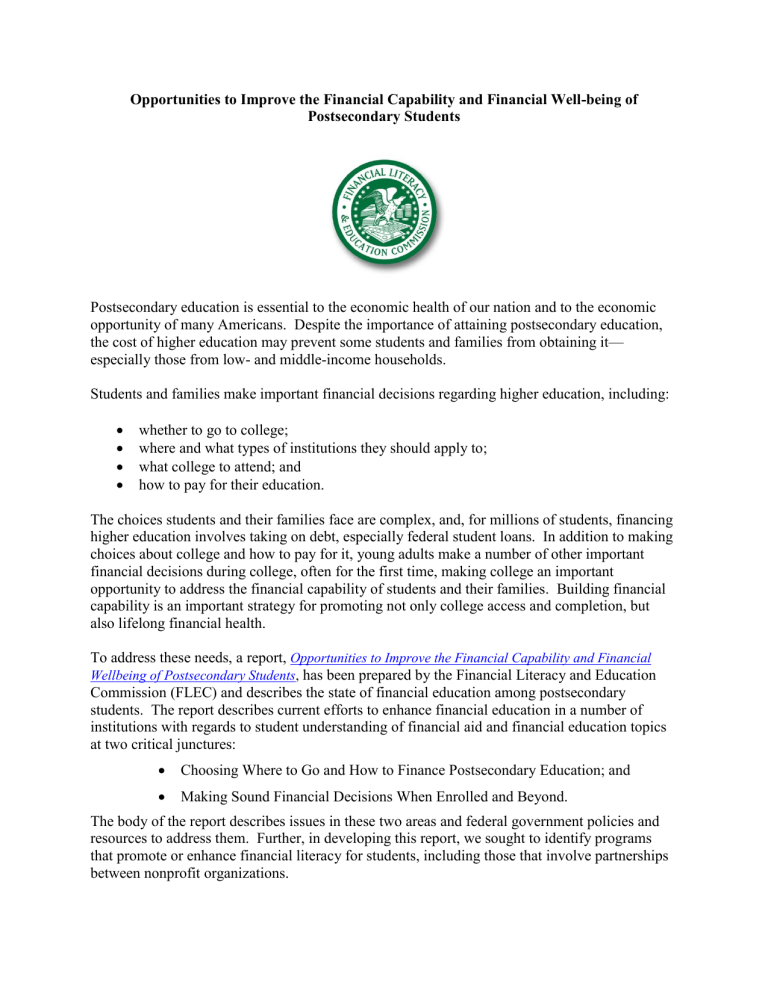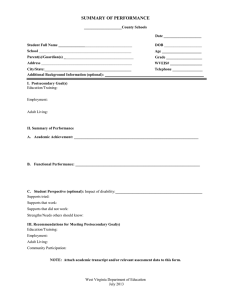
Opportunities to Improve the Financial Capability and Financial Well-being of Postsecondary Students Postsecondary education is essential to the economic health of our nation and to the economic opportunity of many Americans. Despite the importance of attaining postsecondary education, the cost of higher education may prevent some students and families from obtaining it— especially those from low- and middle-income households. Students and families make important financial decisions regarding higher education, including: whether to go to college; where and what types of institutions they should apply to; what college to attend; and how to pay for their education. The choices students and their families face are complex, and, for millions of students, financing higher education involves taking on debt, especially federal student loans. In addition to making choices about college and how to pay for it, young adults make a number of other important financial decisions during college, often for the first time, making college an important opportunity to address the financial capability of students and their families. Building financial capability is an important strategy for promoting not only college access and completion, but also lifelong financial health. To address these needs, a report, Opportunities to Improve the Financial Capability and Financial Wellbeing of Postsecondary Students, has been prepared by the Financial Literacy and Education Commission (FLEC) and describes the state of financial education among postsecondary students. The report describes current efforts to enhance financial education in a number of institutions with regards to student understanding of financial aid and financial education topics at two critical junctures: Choosing Where to Go and How to Finance Postsecondary Education; and Making Sound Financial Decisions When Enrolled and Beyond. The body of the report describes issues in these two areas and federal government policies and resources to address them. Further, in developing this report, we sought to identify programs that promote or enhance financial literacy for students, including those that involve partnerships between nonprofit organizations. The report concludes with a series of recommendations for how institutions of higher education can better equip students to make critical financial decisions. In this report, you can expect to find: federal policies and resources to help students make decisions on college choice and financing; tools for navigating the college search and decision-making process; tools for navigating postsecondary education financing and repayment; financial decisions facing currently enrolled students; financial decisions facing recent graduates; institutional efforts for improving the financial capability of enrolled students; and suggestions for how to implement effective financial education programs and build a culture of financial capability. Appendices include: current college- and university-based programs; financial capability programs not based on campuses; and widely used financial capability resources and curricula. As part of a national strategy to increase financial literacy and financial security, institutions of higher education have a unique and important role to play. Building financial capability is an important strategy for promoting not only college access and completion, but also lifelong financial health. The Commission hopes and anticipates that higher education institutions and other organizations will expand and enhance the delivery of financial education and financial decision-making tools and resources that will help students throughout their postsecondary education and lead to a more financially secure future.

